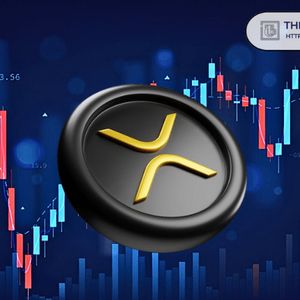Market Pulse
The European Union’s pioneering Markets in Crypto-Assets (MiCA) regulation is progressively coming into full force, ushering in a new era of standardized oversight for digital assets across its 27 member states. This landmark legislation represents the first comprehensive regulatory framework for crypto-assets globally, aiming to provide much-needed clarity, foster innovation, and enhance investor protection within the rapidly evolving crypto landscape. As key provisions activate, the implications for crypto issuers, service providers, and the broader European market are profound, reshaping how digital assets are created, traded, and custodied.
Understanding the MiCA Framework
MiCA is designed to bring order to the previously fragmented and often unregulated world of crypto-assets by establishing a harmonized set of rules across the EU. It primarily targets crypto-assets that are not already covered by existing financial services legislation, such as traditional securities regulations. The framework distinguishes between different types of crypto-assets, applying tailored rules based on their characteristics and potential risks. Its phased implementation ensures a structured transition for market participants, with stablecoin-related rules having taken effect on June 30, 2024, and the broader set of provisions for other crypto-assets and service providers scheduled for December 30, 2024.
- Scope: Covers crypto-assets not classified as existing financial instruments.
- Key Goals: Consumer protection, market integrity, financial stability, and fostering innovation.
- Phased Rollout: Stablecoin rules (ARTs & EMTs) active since June 30, 2024; other rules (crypto-asset service providers) active from December 30, 2024.
Impact on Crypto-Asset Issuers
For issuers of crypto-assets, MiCA introduces stringent requirements, particularly for stablecoins. Issuers of Asset-Referenced Tokens (ARTs) and E-Money Tokens (EMTs) – essentially stablecoins backed by assets or fiat currency, respectively – must obtain authorization and adhere to rigorous operational and prudential standards. This includes maintaining robust reserve requirements, ensuring proper custody arrangements, and providing clear, transparent information to consumers. For other crypto-assets, issuers are generally required to publish a ‘crypto-asset white paper’ detailing the project, its technology, and associated risks, and notify competent authorities before offering them to the public.
- Stablecoin Authorization: Mandatory licensing for ART and EMT issuers by national competent authorities.
- Reserve Requirements: Strict rules on the composition and management of stablecoin reserves to ensure liquidity and stability.
- White Paper Mandate: Issuers of other crypto-assets must publish a detailed disclosure document unless exempt.
- Market Abuse Rules: Provisions to prevent insider trading and market manipulation within the crypto-asset space.
Implications for Crypto-Asset Service Providers (CASPs)
Crypto-Asset Service Providers (CASPs), which include exchanges, custodians, brokers, and advisors, will also face a dramatically altered regulatory landscape. Under MiCA, all CASPs operating in the EU must obtain authorization from a national competent authority. This authorization grants them ‘passporting rights,’ allowing them to offer their services across the entire European Union. The regulation imposes strict operational requirements, including rules on organizational structure, cybersecurity, capital adequacy, and detailed complaint-handling procedures, all aimed at protecting clients and ensuring market integrity. The goal is to level the playing field and ensure that all legitimate crypto service providers adhere to high standards of conduct.
- Mandatory Licensing: All CASPs must be authorized to operate in the EU.
- Passporting Rights: Authorized CASPs can offer services across all EU member states.
- Operational Resilience: Requirements for robust IT systems, security protocols, and governance frameworks.
- Client Protection: Strict rules on client asset segregation, information disclosure, and conflict of interest management.
Shaping the European Crypto Market
MiCA is set to profoundly shape the future of the European crypto market. While some smaller entities may find the compliance burden challenging, the enhanced regulatory clarity is expected to attract greater institutional participation and foster long-term growth and stability. The harmonized approach across the EU aims to prevent regulatory arbitrage and create a more secure and predictable environment for both businesses and consumers. It positions the EU as a global leader in crypto regulation, potentially influencing other jurisdictions to adopt similar frameworks. The success of MiCA will hinge on consistent enforcement and the ability of regulators to adapt to ongoing technological advancements.
Conclusion
The full implementation of the EU’s Markets in Crypto-Assets (MiCA) regulation marks a pivotal moment for the global digital asset space. By establishing a comprehensive and harmonized legal framework, MiCA brings unprecedented clarity and consumer protection to the European crypto market. While it presents significant compliance challenges for market participants, particularly smaller firms, its overarching goal of fostering a secure and innovative environment is expected to solidify the EU’s position as a mature and well-regulated hub for digital finance. The world watches as this ambitious regulatory experiment unfolds, setting a potential benchmark for future global crypto governance.
Pros (Bullish Points)
- Provides regulatory clarity and legal certainty across 27 EU member states.
- Enhances investor protection through disclosure requirements and operational standards for service providers.
- Potential to attract greater institutional investment due to a more regulated environment.
- Fosters a harmonized market, reducing fragmentation and regulatory arbitrage.
Cons (Bearish Points)
- Imposes significant compliance costs and operational burdens, potentially stifling smaller startups.
- Could lead to a 'brain drain' if restrictive rules push innovative projects outside the EU.
- The broad scope and specific definitions might not perfectly adapt to rapidly evolving crypto innovations.
- Risk of over-regulation potentially hindering the growth of decentralized finance (DeFi).



